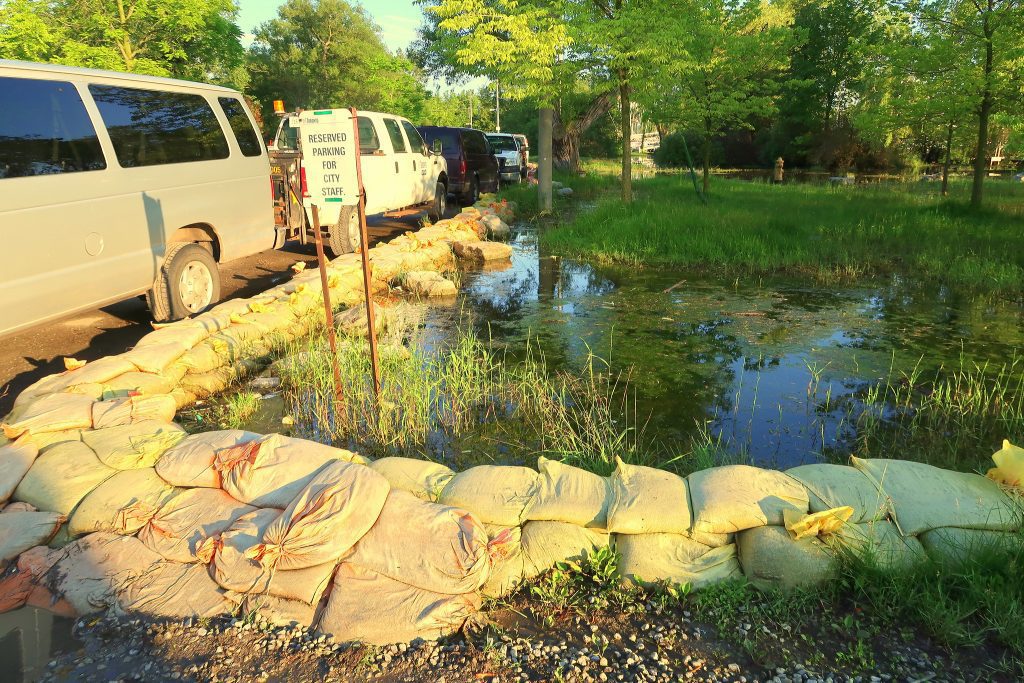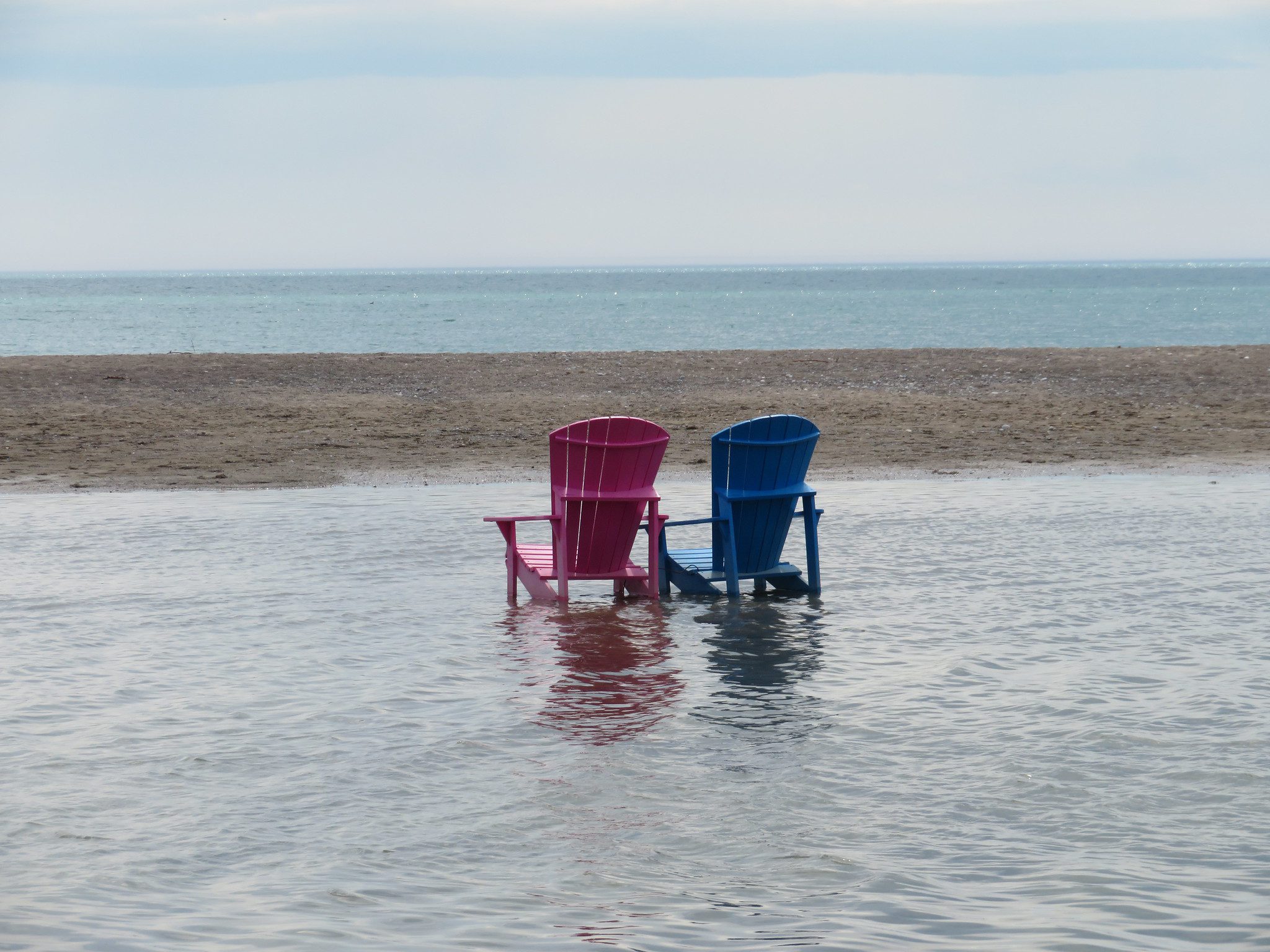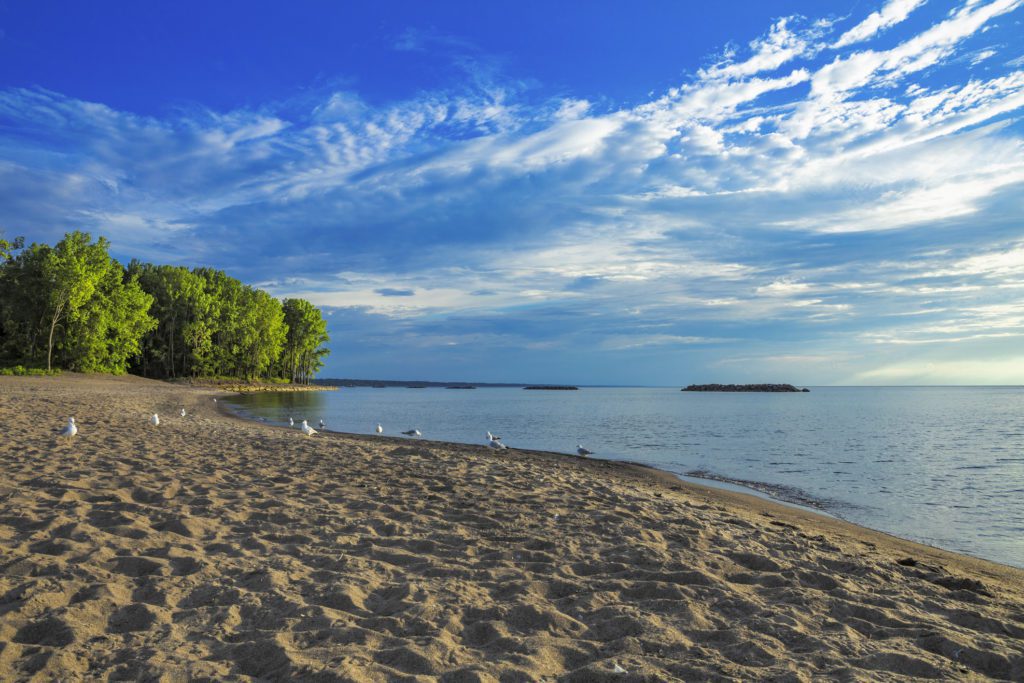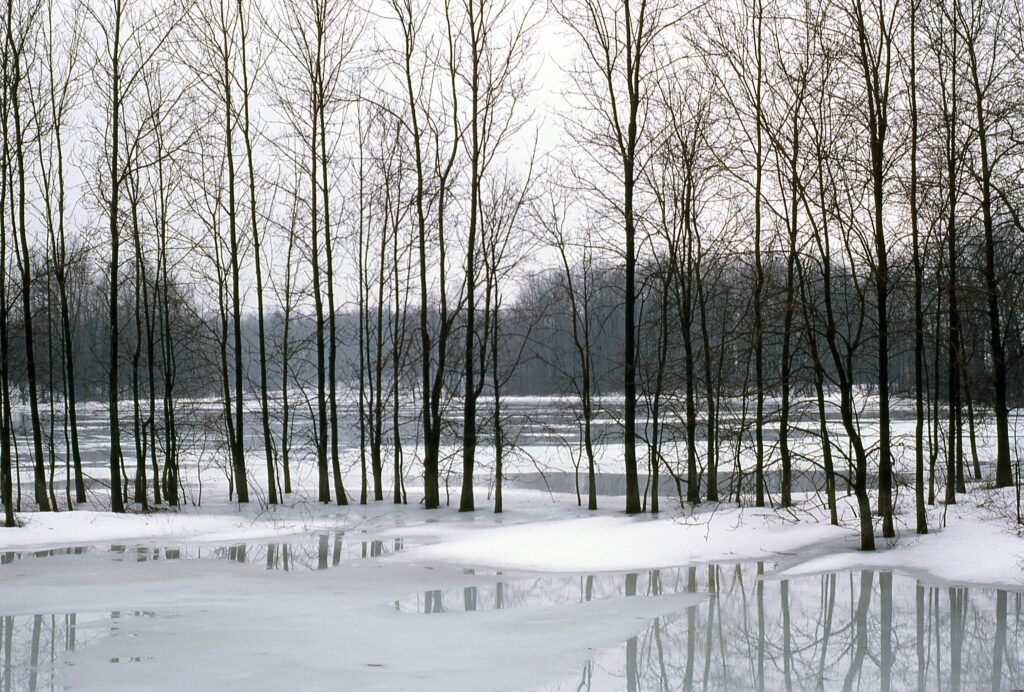In Part 1 of this blog series, we looked at how COVID-19 presents unique and unprecedented challenges to spring flooding and high water conditions that are expected in the Great Lakes region this year. Now, we’ll dig deeper into why the Great Lakes keep flooding, how the lake system works, and how we can be more resilient to these changes in the future.
Why do the Great Lakes flood?

The Great Lakes region is massive and is home to 98 per cent of Ontarians. The Great Lakes basin includes not only the shoreline communities but cities and towns upstream as well. They’re all part of an interconnected system. A drainage basin, or watershed, is a natural boundary where the water falling on that land ends up in the same place eventually. In this case, the Great Lakes.
All of the precipitation (rain and melting snow) in this natural boundary eventually ends up in one of the Great Lakes. five lakes function as a system, draining into one another and then out to the Atlantic Ocean via the St. Lawrence River.

This system is nearly fully natural, but man-made dams influence water levels slightly at two points: in Lake Superior before water enters the St. Mary’s River, and at dams on the eastern end of Lake Ontario before water enters the St. Lawrence.
The International Joint Commission (IJC) has water level boards that decide how much water to let out. The boards manage water levels with public safety, navigation and ecosystems in mind. However, their ability to influence water levels is minor. For example, in March this year, the board let out a record amount of water from Lake Ontario into the St. Lawrence River. Despite the effort, this only translates to about 1cm of lowering in Lake Ontario. The amount and rate at which snow melts and rainfalls across the Great Lakes basin is by far the largest factor for water levels.
When all five lakes face above-average levels, the entire system is under pressure and facing flood conditions. A common analogy to describe Lake Ontario draining into the St. Lawrence is emptying a bathtub with a straw. In reality, the analogy is more accurate if we picture emptying five bathtubs with a straw, representing all the Great Lakes flowing into each other and out to the ocean.
How is climate change impacting the Great Lakes?
Climate change is impacting the Great Lakes region more than any other area in North America. As the atmosphere warms up, it holds more moisture. As a result, there is more precipitation. A recent study found that precipitation in the Great Lakes has increased twice as much as elsewhere – mostly in the form of unusually large rain events.
Not only is more rain contributing to higher lake levels, but more extreme storm events are also battering shoreline communities, like the storm in Norfolk County in early April 2020. Municipalities are bearing the brunt of these storms, and in many cases, communities are ill-prepared for the impacts.
Lake Erie shoreline erosion, flooding fixes in C-K could top $217M https://t.co/zxQ1Ecl9eD pic.twitter.com/RJcU6JtsrT
— Chatham Daily News (@Chathamnews) April 27, 2020
Impacts from climate change have already arrived across the Great Lakes region and it’s costing local governments millions of dollars. More importantly, it’s threatening countless homes and livelihoods. This year, COVID-19 is creating additional challenges for communities impacted by the flood events and spring storms. It will be much more difficult to sandbag, evacuate, and seek safe refuge that complies with physical distancing. This demonstrates how important it is to transition communities toward building resilience and protecting ourselves from the impacts of climate change.
Recovering from COVID-19 while protecting against future crises
Governments both national and provincial have the opportunity to connect our COVID-19 recovery to environmental benefits. The creation of wetlands, improving water infrastructure, and naturalizing shorelines are just some of the projects that would employ highly skilled workers and prevent future crises from climate change impacts across the Great Lakes. With the right investments, we can recover from the current crises and be better prepared for the next one at the same time.
If you are able, we hope you will consider making a donation to help us continue our work in protecting our environment and the health of your family and friends.










